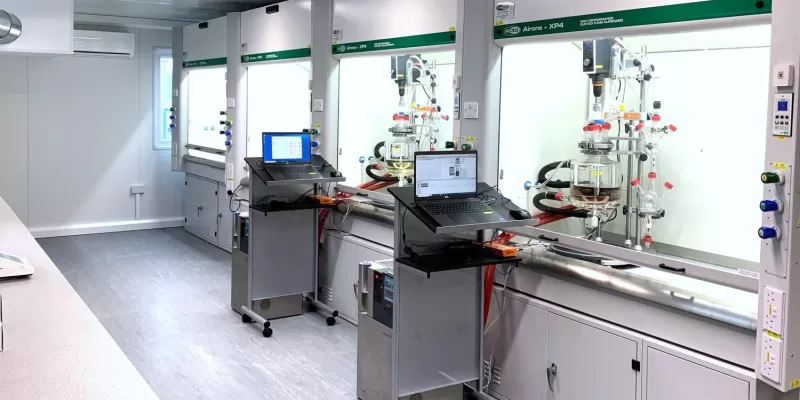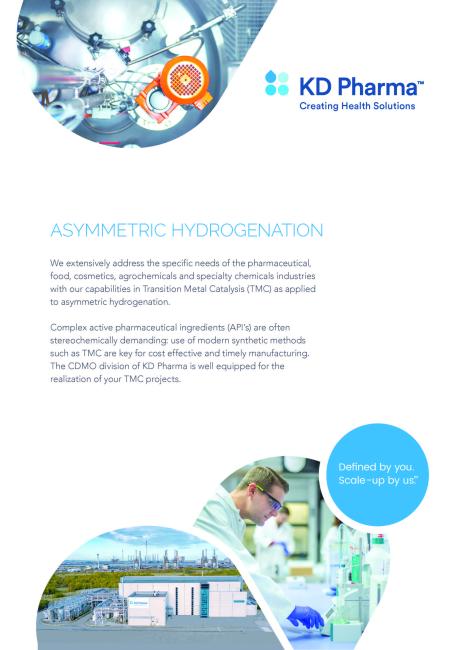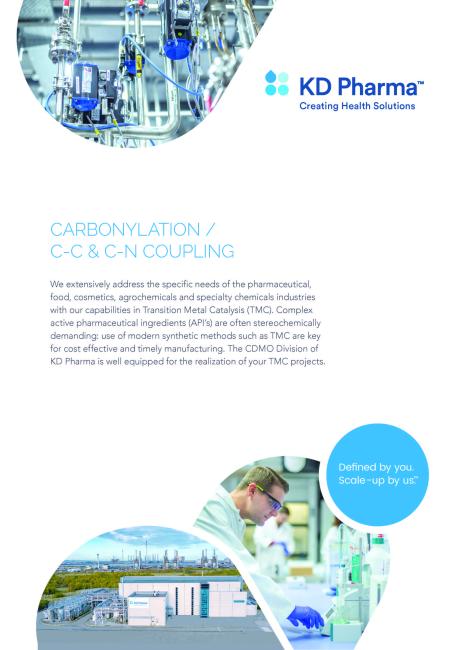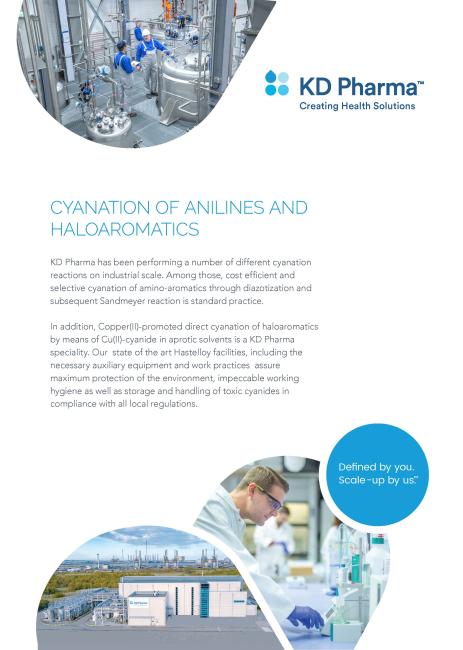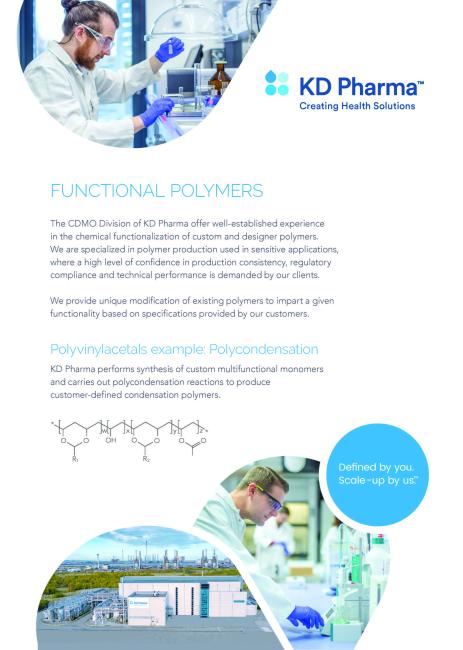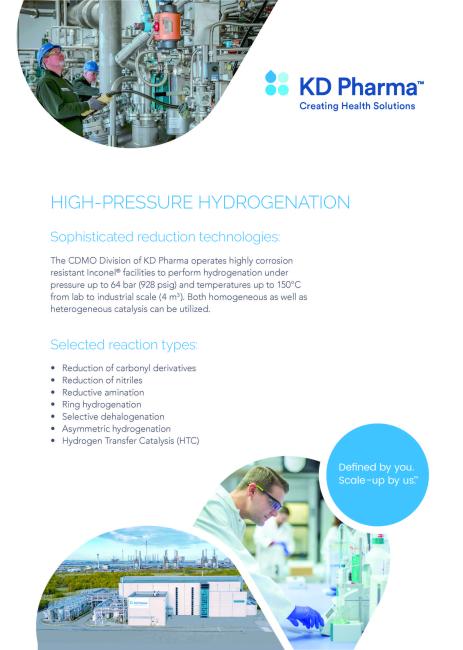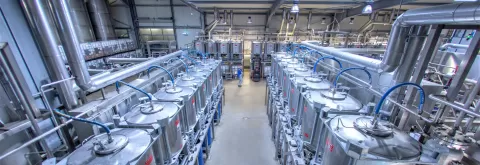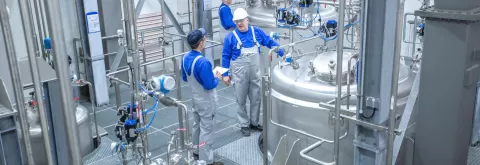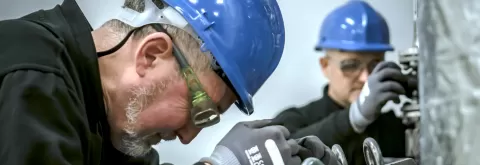KD Pharma Group’s technologies and capabilities include the development and rapid scale-up of complex, multi-step synthetic chemistry.
The main technology groups are:
High Pressure Reactions KD Pharma is capable of bringing high pressure chemistry from R&D to industrial scale (H2, CO2, CO, NH3, NHR2) applying homogeneous as well as heterogenous catalysts. KD Pharma´s highly corrosion resistant Inconel® facilities to perform reactions under pressure up to 64 bar from lab to industrial scale (4 m3) in compliance with cGMP requirements. Both homogeneous as well as heterogeneous catalysis can be utilized.
Selected reaction types are:
- Reduction of carbonyl derivatives
- Reduction of nitriles
- Reductive amination
- •Ring hydrogenation
- Selective dehalogenation
- Asymmetric hydrogenation
- Hydrogen Transfer Catalysis (HTC)
- Carbonylation Reactions
- Amination reactions
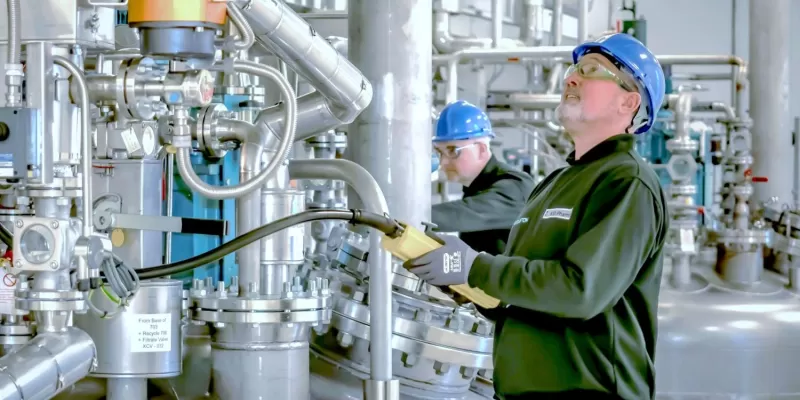
Simulated Moving Bed (SMB) Chromatography is a highly engineered process for implementing chromatographic separations. It is used to separate one chemical compound or one class of chemical compounds from one or more other chemical compounds based on their geometry. SMB is particularly useful in the purification of APIs as it permits the efficient separation of optical isomers.
SMB chromatography technology has several advantages over using simple (batch) HPLC chromatography:
- It allows the production of large quantities of highly purified material on a continuous basis – higher throughput
- Lower amount of stationary phase required Decreased solvent usage
- Lower energy requirements
KD Pharma offers from lab scale, pilot scale to full-scale commercial units for the efficient purification of your product throughout the entire product life cycle – from initial scale-up batches through to commercial manufacturing
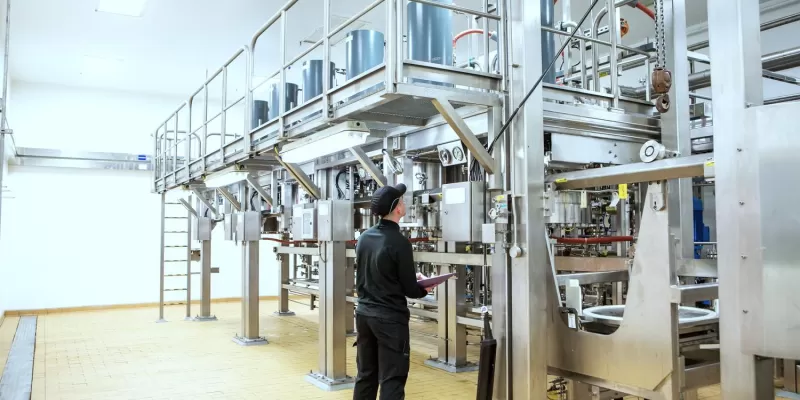
Cryogenic Chemistry KD Pharma can bring cryogenic reactions (down to -90°C) from R&D in to the plant. This technology is particularly useful for modern coupling reactions or increasing selectivity in organo-metallic reactions.
Among the reagents and chemistry that KD Pharma can handle in its cryogenic reactors (upto 2,500 L) are:
- Grignard reagents
- Organolithium chemistry
- Boronic acids
- Organozinc chemistry
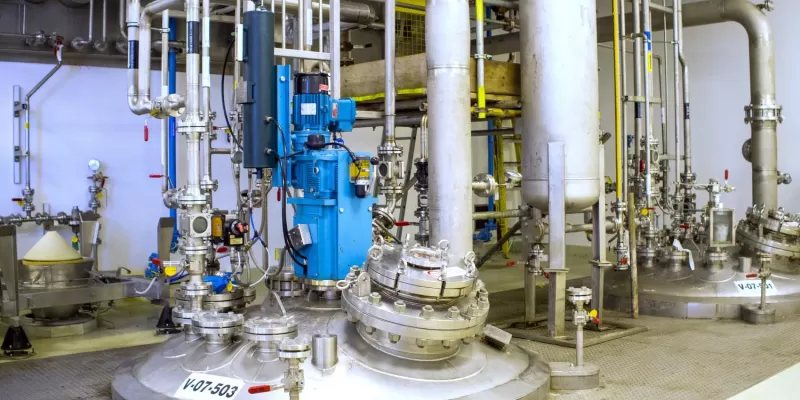
Difficult to handle reagents: KD Pharma has broad experience in handling transition-metal catalysts, biocatalysts and hazardous and malodorous chemicals.
Examples of reagents that KD Pharma can handle:
- Cl2, SOCl2, SO2Cl2, POCl3, PCl3, PCl5, NCS, Oxalyl Chloride, C2Cl6
- Br2, POBr3, PBr3, NBS, HBr, NaBrO3
- I2, Nal, NIS
- NaF, DAST
- NaCN, KCN, Zn(CN)2,
- H2, CO, CO2, NH3, NHR2
- NH2NH2, Alkylhydrazines (Hydrazine Hydrate)
- LiAlH4, AlH2R2, BH3, Na+[H3 BCN]-, NaH, LiBH4, NaBH4
- Me2SO4, Mel and other Alkylhalides
- conc. HNO3, HNO3/H2SO4, HNO3 / glacial AcOH, Nitrous acid (HONO)
- Grignard, BuLi, HexLi, LDA, LiHMDS, Organo Zinc (in-situ), LTB, KTB
- HNO3, KMnO4, mCPBA, DDQ, H2O2, (t-BuO)2, peracids, Oxone, NaIO4
- Chloroformates
- P2O5, HOBT (hydroxybenzotriazole), DIAD (diisopropylazodicarboxylate)
- Thiols (e.g.Ethanethiol)
- Raney Nickel
Since this list is comprehensive but not complete please reach out in case a reagent is not listed.
